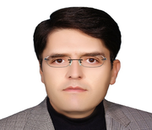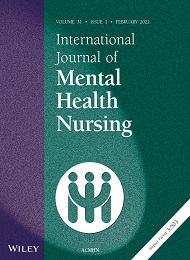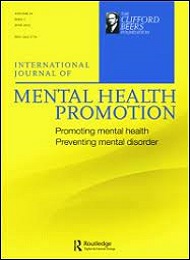Theme: Leading Researches and Innovations towards Mental Disorders and Illness
EURO MENTAL DISORDER 2023
EURO MENTAL DISORDER 2023 which is scheduled May 13-14, 2023 Paris, France. The main theme of our conference is "Leading Researches and Innovations towards Mental Disorders and Illness". which covers wide range of critically important sessions. It’s a platform to bring all the neuroscientists together to share their experiences it’s the amalgam of scientific research as well as innovative ideas.
The organizing committee is gearing up for an exciting and informative conference program including plenary lectures, symposia, workshops on a variety of topics, poster presentations and various programs for participants from all over the world. We invite you to join us at the Euro Mental Disorder, where you will be sure to have a meaningful experience with researchers and industrial people across the world. All the members of Euro Mental Disorder organizing committee look forward to meet you at Paris, France.
Why to Attend?
International Conference on Euro Mental Disorder and illness is to commit an extraordinary program for conversation of ideas and authoritative views by leading scientists which covers the entire spectrum of investigation in mental disorders and share the cross-cultural experiences of several treatment procedures. The central aim of this event is to distribution the current research, revolutions, advance methods and tactics which are practical in the field of mental Disorders and illness
Our conference takes national and International eminent characters to a single floor and also provides a good opportunity for business. Our conference consist of symposium, workshops, lectures, YRF (Young Research Forum), poster presentation and various other programs for the participant over the globe.
Track 1. Stroke
Stroke happens when the supply of blood to the cerebrum is either foiled or lessened. Ischemic and haemorrhagic are sorts of empower autonomously. This can be expedited as a result of the blockages within the passages that supply blood to the intellect which prompts coagulating of blood. Sleek stores within the conductors cause the coagulation. What's more, besides supply courses within the cerebrum either spilling blood or affecting open within the long run realizes stroke. Deadness of the confront, arm or leg, especially on one side of the body; issue with seeing, in one or both eye and with strolling, counting dazedness and nonappearance of co-arrangement. The as of now indicated may be a bit of the sign of stroke.
Track 2. Dementia
Dementia is more common as people grow older (about one-third of all people age 85 or older may have some form of dementia) but it is not a normal part of aging. Many people live into their 90s and beyond without any signs of dementia.
• Frontotemporal dementia, a rare form of dementia that tends to occur in people younger than 60. It is associated with abnormal amounts or forms of the proteins tau and TDP-43.
• Lewy body dementia, a form of dementia caused by abnormal deposits of the protein alpha-syncline, called Lewy bodies.
• Vascular dementia, a form of dementia caused by conditions that damage blood vessels in the brain or interrupt the flow of blood and oxygen to the brain.
• Mixed dementia, a combination of two or more types of dementia.
Track 3. Alzheimer’s Disease
the most common dementia diagnosis among older adults. It is caused by changes in the brain, including abnormal build-ups of proteins, known as amyloid plaques and tau tangles
Track 4. Epilepsy
Epilepsy may occur as a result of a genetic disorder or an acquired brain injury, such as a trauma or stroke. During a seizure, a person experiences abnormal behaviour, symptoms and sensations, sometimes including loss of consciousness. There are few symptoms between seizures. Epilepsy is usually treated by medication and in some cases by surgery, devices or dietary changes.
Track 5. Neuroimaging and Radiology
Neuroimaging differs from neuroradiology which is a medical specialty and uses brain imaging in a clinical setting. Neuroradiology is practiced by radiologists who are medical practitioners. Neuroradiology primarily focuses on identifying brain lesions, such as vascular disease, strokes, tumours and inflammatory disease. In contrast to neuroimaging, neuroradiology is qualitative (based on subjective impressions and extensive clinical training) but sometimes uses basic quantitative methods. Functional brain imaging techniques, such as functional magnetic resonance imaging (fMRI), are common in neuroimaging but rarely used in neuroradiology. Neuroimaging falls into two broad categories: Structural imaging, which is used to quantify brain structure using e,g, voxel based morphometric. Functional imaging, which is used to study brain function, often using fMRI and other techniques such as PET and MEG
Track 6. Spine Disorders
Spinal disease refers to a condition impairing the backbone. These include various diseases of the back or spine ("dorso"), such as kyphosis. Dorsalgia refers to back pain. Some other spinal diseases include spinal muscular atrophy, enclosing spondylitis, lumbar spinal stenosis, spine bifida, spinal tumours, osteoporosis and caudal equine syndrome.
Track 7. Mental Illness
Mental health is the psychological condition of someone who is functioning at a higher level of emotional and behavioural condition. Greater than 200 categorized forms of mental illness conditions are there. Mental health includes an individual’s potential to enjoy life and create a balance between normal life activities and efforts to achieve human resilience. It is important in every stage of life, including childhood and adolescence through adulthood. Half of the mental health conditions begin at 14 and the remaining conditions develop by age of 24. Prevention of mental disorder at the young age may significantly decrease the risk that a child will suffer in the later life.
- Child and adolescent mental health
- School Mental Health
- HIV and Mental Health
- Psychology and Mental Health
- Religious Beliefs and Mental Health
- Mental health services and policies
- Human rights and mental health legislation
- E-Mental health and self-help
Track 8. Types of Mental Health’s
A mental disorder is characterized by a clinically significant disturbance in an individual’s cognition, emotional regulation, or behaviour. It is usually associated with distress or impairment in important areas of functioning. There are many different types of mental disorders.
- Anxiety disorders.
- Behavioural and emotional disorders in children.
- Bipolar affective disorder.
- Depression.
- Dissociation and dissociative disorders.
- Eating disorders.
- Obsessive compulsive disorder.
- Paranoia
Track 9. Depression
Depression (major depressive disorder) is a common and serious medical illness that negatively affects how you feel, the way you think and how you act. Fortunately, it is also treatable. Depression causes feelings of sadness and/or a loss of interest in activities you once enjoyed. It can lead to a variety of emotional and physical problems and can decrease your ability to function at work and at home.
Track 10. Eating Disorders
Eating disorders are behavioural conditions characterized by severe and persistent disturbance in eating behaviours and associated distressing thoughts and emotions. They can be very serious conditions affecting physical, psychological and social function. Types of eating disorders include anorexia nervosa, bulimia nervosa, binge eating disorder, avoidant restrictive food intake disorder, other specified feeding and eating disorder, pica and rumination disorder.
Track 11. Schizophrenia
Schizophrenia is a serious mental illness characterised by aberrant social behaviour and difficulty distinguishing between what is genuine and what is not. Obsessive-compulsive symptoms affect the majority of people with schizophrenia. Obsessive-compulsive disorder is diagnosed in about 12% of the population. Schizophrenia and OCD are fundamentally unrelated in terms of their causes and symptoms, although they have several characteristics that make a select people more vulnerable to both Contaminations.
- Perfection.
- Doubt/harm.
- Forbidden thoughts
Track 12. Anxiety Disorder
Anxiety disorder due to a medical condition includes symptoms of intense anxiety or panic that are directly caused by a physical health problem. Generalized anxiety disorder includes persistent and excessive anxiety and worry about activities or events, even ordinary, routine issues.
Track 13. Chronic Mental Illness
Chronic mental illness refers to conditions with persistently debilitating psychiatric symptoms and severely impaired function. Individuals with chronic mental illness suffer from symptoms that may interfere with their ability to perform activities of daily living (ADLs) and to participate in work, school, and interpersonal relationships. At times in their lives, these individuals often require significant care from family and from mental health care providers.
Track 14. Women’s Mental Health
Depression, anxiety, psychological distress, sexual violence, domestic violence and escalating rates of substance use affect women than men across different countries and different settings. Pressures created by their multiple roles, gender discrimination and associated factors of poverty, hunger, malnutrition, overwork, domestic violence, and sexual abuse, combine to account for women's poor mental health. When women dare to disclose their problems, many health workers tend to have gender biases which lead them to either over-treat or under-treat women.
Track 15.Neurological Disorders
Neuropsychology is a branch of psychology concerned with how the cerebrum and the rest of the sensory system interact with an individual's judgement and behaviour. Experts in this field of brain science frequently discuss the psychological and behavioural consequences of mental wounds or illnesses. Behavioural addictions have similar effects on relationships as chemical addictions on relationships, which are frequently overlooked for the habit-forming behaviour, undermining trust and forcing partners and other relatives to hide and compensate for issues arising from the obsession.
- Neurobiology
- Neurocognition
- Neurophysiology
- Neuroimaging
- Behavioural addiction
Track 16. Neurological Disorders
Organic or Neuropsychiatry? Psychiatry is a branch of medicine that deals with mental issues resulting from sensory system illnesses. Neuropsychiatry, on the other hand, is a growing specialism of psychiatry that is also closely linked to the sciences of neuropsychology and conduct nervous system science. Neurodevelopmental diseases are impediments to the cerebrum's or potentially focal sensory system's development and improvement. A more limited application of the phrase refers to a mental health issue that affects feelings, learning ability, discretion, and memory as an individual creates and evolves. seizures.
- attention deficit disorders.
- cognitive deficit disorders.
- palsies.
- uncontrolled anger.
- migraine headaches.
- addictions.
- eating disorders
Scope and Importance
Mental problems will afflict one out of every four people on the planet at some point in their lives. Mental diseases affect around 450 million individuals globally, making them one of the most common causes of illness. Treatments are accessible, yet nearly two-thirds of persons with a diagnosable mental illness never seek professional assistance. According to the World Health Organization, stigma, prejudice, and neglect prohibit persons with mental illnesses from receiving care and treatment (WHO). There is little or no understanding where there is neglect. There is neglect when there is no comprehension. As a result, it is critical to brush up on this subject.
Stress, Depression and anxiety treatment market
By 2022, the market for stress, depression treatment, and anxiety disorder treatment will be worth $17.4 billion. According to a survey, the global anxiety disorders and depression therapy market is expected to grow at an average CAGR of 2.75 present from 2017 to 2022. In 2015, the global anxiety disorders and depression therapy market was worth £22.5 billion, and by 2020, it is expected to be worth £18.2 billion. According to the World Health Organization, around 300 million individuals worldwide suffer from depression, anxiety, and stress.
Global psychiatrist market
The global psychiatrist market was estimated to be worth $795.1 billion in 2015. North America accounted for $380.1 billion in global sales, or 0.4 percent of the total. The United States was the greatest country, with $318.8 billion in sales, or 0.4 percent of the global psychiatric market. According to certain analyses, the global schizophrenia.
Conference Highlights
To share your views and research, please click here to register for the Conference.
To Collaborate Scientific Professionals around the World
| Conference Date | May 23-24, 2023 | ||
| Sponsors & Exhibitors |
|
||
| Speaker Opportunity Closed | |||
| Poster Opportunity Closed | Click Here to View | ||
Useful Links
Special Issues
All accepted abstracts will be published in respective Our International Journals.
- International Journal of Emergency Mental Health and Human Resilience
- International Journal of Mental Health Promotion
- International Journal of Mental Health Nursing
Abstracts will be provided with Digital Object Identifier by















